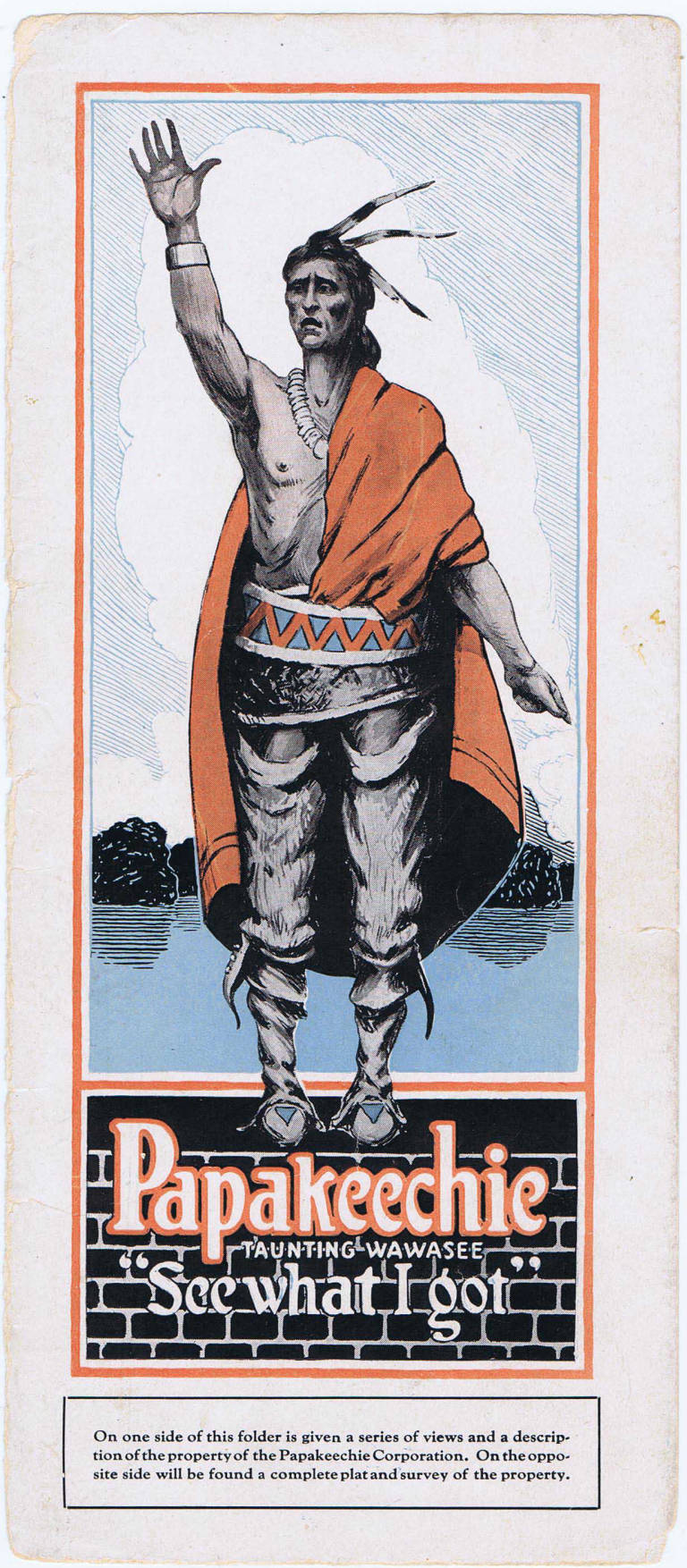Chief Papakeechie
Part 2, by Jo Ann Merkle Vrabel, Feature Writer
Flat-Belly (Chief Papakeechie), the Greatest Chief of the Miami People.
Kosciusko County’s great Miami chief in the 1830’s was Flat-Belly. He claimed a total of 36 sections of land located in both Kosciusko and Noble counties. Nineteen of these sections were in Tippecanoe and Turkey Creek townships of this county including lands around the approximate eastern one-half of Lake Wawasee. Flat-Belly lived in a one-story brick house given to him by the United States government in exchange for land. When built, the house cost $600, according to Marion Wallace Coplen in The History of Kosciusko County Indiana to 1875.
Flat-Belly’s house was located in the southeast corner of his village which is now called Indian Village in Noble County. When he died, the house was torn down by the white settlers and the bricks from his house were used for chimneys, says Waldo Adams, first vice-president of the Kosciusko County Historical Society.
“Most of the early settlers here hated the Indians awfully. They didn’t want to hear the sound or even smell the smell of an Indian around here. So they tore down any sign of the Indians that they could. That’s why there are so few Indian relics here today. About the only thing left of the Kosciusko County Indians is made of stone that couldn’t be destroyed. ” says Adams.
Flat-Belly, also named Papakeechie, was a large, strong Indian of a dark copper color. He weighed approximately 300 pounds and was 60 years old in the 1830’s, according to J. F. Everhart in The Combination Atlas Map of Kosciusko County Indiana. He was one of the most politically powerful chiefs of the Miami nation in 1834.
Chief Flat-Belly, Also known as Papakeechie

